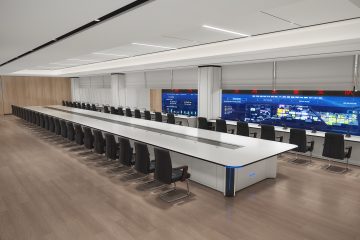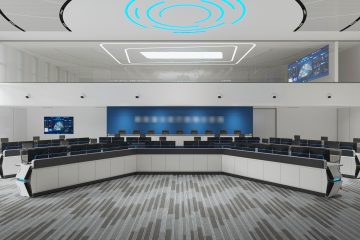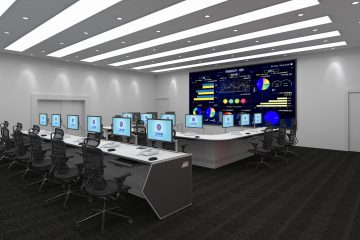As technology advances rapidly, control consoles, the central hub of various industries, are transforming. The future of these consoles is not just about technological progress but a blend of technology and human-centered design. Intelligence, connectivity, and humanization are key elements in this evolution.
Intelligence: From Data to Decision-Making
Intelligent technology is central to future control room consoles. AI and machine learning (ML) enable consoles to process vast data and extract valuable insights. Advanced analytics and predictive models assist operators in decision-making, enhancing response speed and accuracy. For instance, in a power control room, AI monitors the grid in real-time, predicts faults, and provides solutions, reducing downtime and economic losses.
Intelligent consoles can also adapt to operators’ behavior patterns and needs. Biometric technology, for example, can recognize an operator’s identity and load their personalized settings, ensuring a comfortable and efficient work environment.
Connectivity: Seamless Working Environment
Future control room consoles will use the Internet of Things (IoT) to connect devices and people seamlessly. This connectivity includes hardware communication and data sharing.
In a smart city management control room, data from various sensors and devices integrate in real-time, creating a dynamic picture of city operations. Traffic management, public safety, and environmental monitoring systems share data, enabling comprehensive decisions on a unified platform. This enhances urban operations’ efficiency and intelligence.
Humanization: User-Centric Design Philosophy
Future control room consoles must be technologically advanced and user-centric. Humanization focuses on keeping operators comfortable and efficient during long, intense work hours.
Ergonomic design is fundamental. Chairs, monitors, and console layouts must meet ergonomic standards to reduce fatigue and discomfort. Affective computing technology can sense operators’ emotions and states. By detecting facial expressions and physiological signals, the system determines if an operator is fatigued or stressed, providing rest suggestions or adjusting workload.
Diverse interaction methods are also crucial. Future consoles will include voice recognition, gesture control, and virtual reality (VR) technologies, offering a natural and convenient operation experience. In emergencies, operators can quickly execute critical commands through voice instructions, avoiding complex interfaces.
Conclusion
Future control room consoles, driven by intelligence, connectivity, and humanization, will blend technology and humanity perfectly. This evolution signifies a technological leap and a revolutionary improvement in the working environment. Control rooms will transform from cold, technical centers into vibrant, intelligent, humanized workspaces. This trend promises a more efficient, safe, and comfortable working experience across industries.



0 Comments